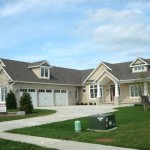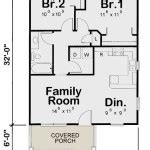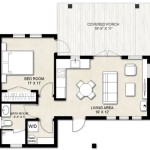A 2-floor plan house is a type of residential building that has two levels and is designed to accommodate families, couples, or individuals. Its primary function is to provide comfortable and functional living spaces, separate from other units, while maximizing space utilization.
2-floor plan houses are common in urban and suburban areas, offering a balance of privacy and convenience. For instance, a two-story house may have the living room, dining room, and kitchen on the ground floor, while the bedrooms and bathrooms are located on the upper floor, ensuring a clear separation between public and private spaces.
Now, let’s delve deeper into the advantages and considerations associated with 2-floor plan houses, exploring their suitability for various needs and lifestyles.
2-floor plan houses offer several advantages and considerations to potential homeowners. Here are 10 important points to keep in mind:
- Vertical space utilization
- Privacy separation
- Increased natural light
- Potential for higher resale value
- Higher construction costs
- Staircase safety concerns
- Limited accessibility for disabled individuals
- Higher energy consumption
- Space optimization
- Aesthetic appeal
These points highlight the key aspects to consider when evaluating whether a 2-floor plan house aligns with your needs and lifestyle.
Vertical space utilization
One of the primary advantages of a 2-floor plan house is its efficient use of vertical space. By distributing living areas across two levels, 2-floor plan houses maximize the available square footage, making them ideal for smaller lots or urban areas where space is limited.
The vertical space utilization allows for a more efficient allocation of rooms and functions. For example, common areas such as the living room, dining room, and kitchen can be situated on the ground floor, while bedrooms and bathrooms can be located on the upper floor. This separation of public and private spaces enhances privacy and creates a more comfortable living environment.
Moreover, the vertical space utilization in 2-floor plan houses provides the opportunity for additional features and amenities. Many 2-floor plan houses incorporate balconies, terraces, or lofts, which further extend the living space and offer unique architectural elements.
Overall, the vertical space utilization in 2-floor plan houses is a key advantage that contributes to their functionality, space efficiency, and overall livability.
In addition to the efficient use of space, 2-floor plan houses also offer several other advantages. These include increased privacy separation, potential for higher resale value, and enhanced aesthetic appeal. However, it is important to consider factors such as higher construction costs, staircase safety concerns, limited accessibility for disabled individuals, and higher energy consumption when evaluating a 2-floor plan house.
Privacy separation
2-floor plan houses excel in providing privacy separation due to the physical division of living spaces across different levels. The separation of public and private areas enhances the comfort and privacy of all occupants.
The ground floor typically accommodates common areas such as the living room, dining room, and kitchen, which are designed for entertaining guests and family gatherings. These spaces are more accessible to visitors and offer a sense of openness and connection.
In contrast, the upper floor is often dedicated to private areas such as bedrooms and bathrooms. This separation creates a sanctuary for rest, relaxation, and personal activities. The bedrooms are more secluded and less prone to noise and interruptions from the common areas below.
Furthermore, 2-floor plan houses often incorporate features that enhance privacy within the private spaces. For example, master bedrooms may have en-suite bathrooms and walk-in closets, providing a private and luxurious retreat for the homeowners. Additionally, upper-floor bedrooms may have balconies or terraces that offer a private outdoor space for relaxation and enjoyment.
Overall, the privacy separation in 2-floor plan houses is a significant advantage that contributes to the comfort, tranquility, and overall well-being of the occupants.
Increased natural light
2-floor plan houses often benefit from increased natural light due to their vertical structure and strategic window placement. This abundance of natural light contributes to a brighter, more inviting, and healthier living environment.
- Larger windows and higher ceilings
2-floor plan houses can accommodate larger windows and higher ceilings compared to single-story houses. These features allow for more natural light to penetrate the living spaces, creating a brighter and more spacious atmosphere. The larger windows also provide panoramic views of the surrounding landscape, enhancing the connection between the indoors and outdoors.
- Multiple levels and angles
The multiple levels and angles of a 2-floor plan house allow for windows to be placed on different walls and at varying heights. This strategic placement ensures that natural light can reach all areas of the house, reducing the need for artificial lighting during the day. The varying angles of the windows also create interesting light patterns and shadows, adding depth and character to the living spaces.
- Reduced obstruction
2-floor plan houses often have fewer obstructions to natural light compared to single-story houses. The absence of a second story directly above the main living areas allows for larger windows and fewer walls blocking the sunlight. This unobstructed flow of natural light creates a more open and airy atmosphere throughout the house.
- Energy efficiency and well-being
The increased natural light in 2-floor plan houses not only enhances the aesthetics but also contributes to energy efficiency and well-being. Natural light can reduce the reliance on artificial lighting, leading to lower energy consumption. Additionally, exposure to natural light has been linked to improved mood, increased productivity, and better sleep patterns.
Overall, the increased natural light in 2-floor plan houses is a significant advantage that creates a brighter, healthier, and more enjoyable living environment.
Potential for higher resale value
2-floor plan houses have the potential for higher resale value compared to single-story houses due to several factors that enhance their desirability and market value.
Increased living space: 2-floor plan houses offer more living space than single-story houses with the same footprint. The vertical expansion allows for additional bedrooms, bathrooms, and living areas, which are highly sought after by families and buyers looking for more space.
Efficient use of space: The vertical structure of 2-floor plan houses maximizes the available space, making them more efficient and appealing to buyers. The separation of living areas across different levels creates a more spacious and organized living environment, which is a key factor in determining resale value.
Enhanced privacy: As discussed earlier, 2-floor plan houses provide excellent privacy separation due to the physical division of living spaces across different levels. This privacy is highly valued by buyers, especially those with families or those who prefer a more secluded living environment.
Architectural appeal: 2-floor plan houses often have a more visually appealing and architecturally interesting design compared to single-story houses. The varying rooflines, exterior details, and the interplay of different levels add to the aesthetic value and curb appeal of the house, which can translate into a higher resale value.
Additional amenities: 2-floor plan houses can accommodate additional amenities that enhance their value and desirability. These may include balconies, terraces, lofts, or finished basements, which provide extra living space and functionality. The presence of these amenities makes the house more attractive to buyers and can positively impact its resale value.
Overall, the potential for higher resale value in 2-floor plan houses is driven by their increased living space, efficient use of space, enhanced privacy, architectural appeal, and additional amenities. These factors make 2-floor plan houses a desirable choice for buyers, leading to higher market value and a stronger return on investment.
Higher construction costs
2-floor plan houses generally have higher construction costs compared to single-story houses due to several factors related to their design and structural requirements.
- Foundation and structural support: 2-floor plan houses require a stronger foundation and structural support system to bear the weight of two stories. This includes reinforced foundations, thicker walls, and additional beams and columns, which can significantly increase the construction costs.
- Materials and labor: Building a 2-story house requires more materials and labor compared to a single-story house. The additional materials include lumber for framing, drywall for walls and ceilings, roofing materials, and exterior finishes. The increased labor costs are associated with the additional time and effort required to construct the second story, including framing, electrical wiring, plumbing, and insulation.
- Staircase and railings: The construction of a staircase and railings is a significant cost factor in 2-floor plan houses. Staircases require specialized craftsmanship and materials, and their design and placement can impact the overall cost of the house. Additionally, safety railings and handrails are essential for staircases, further adding to the construction costs.
- Higher roof and exterior: 2-floor plan houses have a larger roof area compared to single-story houses, which increases the cost of roofing materials and labor. Additionally, the exterior of a 2-story house requires more siding, paint, or other finishes, contributing to the higher construction costs.
Overall, the higher construction costs of 2-floor plan houses are primarily driven by the need for a stronger foundation, additional materials and labor, the construction of a staircase and railings, and the larger roof and exterior area.
Staircase safety concerns
Slip and fall hazards
Staircases in 2-floor plan houses pose a significant risk of slip and fall accidents due to several factors. The smooth surface of stairs, especially when wet or icy, can cause individuals to lose their footing and fall. Additionally, the lack of proper lighting or contrasting colors on the stairs can make it difficult to see steps clearly, increasing the risk of tripping or missing a step.
Handrail safety
Handrails are essential safety features on staircases, providing support and stability to individuals using the stairs. However, inadequate handrails or the absence of handrails altogether can lead to serious accidents. Handrails should be securely fastened, have a continuous grippable surface, and be at the appropriate height for comfortable and safe use.
Staircase dimensions
The dimensions of a staircase, including the width, height, and depth of the steps, play a crucial role in staircase safety. Steps that are too narrow, too high, or too shallow can make it difficult for individuals to navigate the stairs safely. Additionally, the slope or angle of the staircase should be designed to minimize the risk of tripping or falling.
Lighting and visibility
Proper lighting is essential for staircase safety. Dim or inadequate lighting can make it difficult to see steps clearly, increasing the risk of accidents. Staircases should have sufficient natural or artificial lighting to ensure good visibility throughout the day and night. Additionally, the use of contrasting colors or patterns on the stairs can help improve visibility and make the stairs more noticeable.
Overall, staircase safety in 2-floor plan houses is a critical consideration that requires careful attention to design and maintenance. Addressing slip and fall hazards, ensuring proper handrail safety, considering staircase dimensions, and providing adequate lighting can significantly reduce the risk of accidents and enhance the overall safety of the house.
Limited accessibility for disabled individuals
2-floor plan houses present challenges for disabled individuals, particularly those who rely on wheelchairs or have limited mobility.
- Staircase barriers:
Staircases are a significant barrier for disabled individuals in 2-floor plan houses. Navigating stairs can be difficult or impossible for those in wheelchairs or with other mobility impairments. The lack of ramps or elevators makes it challenging for disabled individuals to access the upper floor, limiting their ability to fully utilize the house.
- Bathroom inaccessibility:
Bathrooms are essential spaces that should be accessible to all occupants of a house. However, in 2-floor plan houses, bathrooms are often located on the upper floor, making them inaccessible to disabled individuals who cannot climb stairs. The absence of accessible bathrooms on the ground floor can significantly impact their independence and quality of life.
- Limited mobility within the house:
Even if a disabled individual can access the upper floor, they may face limited mobility within the house. Narrow hallways, doorways, and lack of accessible features such as grab bars or wider doorways can make it difficult for them to move around safely and independently. The lack of accessibility can restrict their ability to participate fully in household activities and social interactions.
- Emergency egress:
In case of an emergency, such as a fire or natural disaster, it is crucial for all occupants to be able to evacuate the house quickly and safely. For disabled individuals in 2-floor plan houses, evacuating during an emergency can be challenging or even impossible if stairs are the only means of escape. The lack of accessible escape routes can put their lives at risk.
Overall, the limited accessibility for disabled individuals in 2-floor plan houses is a significant concern that can impact their independence, quality of life, and safety. Careful consideration should be given to accessibility features and modifications to ensure that 2-floor plan houses are inclusive and accessible to all occupants.
Higher energy consumption
2-floor plan houses generally have higher energy consumption compared to single-story houses due to several factors related to their design and structural characteristics.
- Larger surface area:
2-floor plan houses have a larger surface area compared to single-story houses with the same square footage. The increased surface area results in greater heat loss through the walls, roof, and windows, leading to higher energy consumption for heating and cooling.
- Stack effect:
The stack effect is a natural phenomenon that occurs in buildings with multiple stories. Warm air rises, and in a 2-floor plan house, the warm air tends to accumulate on the upper floor. This creates a temperature difference between the upper and lower floors, resulting in increased energy consumption as the HVAC system works to balance the temperatures.
- Longer ductwork:
2-floor plan houses require longer ductwork for the HVAC system to distribute air throughout the house. The longer ducts increase the friction and resistance to airflow, reducing the efficiency of the HVAC system and leading to higher energy consumption.
- Air leakage:
2-floor plan houses have more potential for air leakage compared to single-story houses due to the increased number of penetrations in the building envelope for stairs, plumbing, and electrical systems. Air leakage allows conditioned air to escape and outside air to enter, increasing the energy consumption required to maintain a comfortable indoor temperature.
Overall, the larger surface area, stack effect, longer ductwork, and increased air leakage in 2-floor plan houses contribute to higher energy consumption compared to single-story houses. Careful attention to insulation, air sealing, and HVAC system design can help mitigate these factors and improve the energy efficiency of 2-floor plan houses.
Space optimization
2-floor plan houses offer excellent opportunities for space optimization due to their vertical structure and efficient use of available space.
Vertical space utilization: The most significant advantage of a 2-floor plan house is its ability to maximize vertical space. By distributing living areas across two levels, 2-floor plan houses make efficient use of the available footprint. This vertical space utilization allows for more rooms and functions to be accommodated within a smaller footprint, making it an ideal option for smaller lots or urban areas where space is limited.
Separation of public and private areas: 2-floor plan houses typically dedicate the ground floor to common areas such as the living room, dining room, and kitchen, while the upper floor is reserved for private areas like bedrooms and bathrooms. This separation of public and private spaces not only enhances privacy but also optimizes space utilization. By placing common areas on the ground floor, which is more accessible to guests and family gatherings, the upper floor can be dedicated to more private and personal activities.
Multi-purpose spaces: 2-floor plan houses often incorporate multi-purpose spaces to maximize space utilization. For example, a loft area can serve as an additional living space, a home office, or a playroom. Similarly, a finished basement can be transformed into a recreation room, a guest room, or a home gym. These multi-purpose spaces add value and functionality to the house without requiring additional square footage.
Smart storage solutions: 2-floor plan houses provide ample opportunities for incorporating smart storage solutions. Built-in shelves, cabinets, and drawers can be strategically placed throughout the house to maximize storage capacity. Additionally, under-stair storage, attic storage, and pull-out drawers can be utilized to make the most of every available space.
Overall, the space optimization techniques employed in 2-floor plan houses make them an excellent choice for homeowners who seek to maximize space utilization, create a functional and comfortable living environment, and accommodate a variety of needs and lifestyles within a limited footprint.
Aesthetic appeal
2-floor plan houses offer a wide range of aesthetic possibilities due to their architectural flexibility and design options.
Architectural diversity: 2-floor plan houses can accommodate a variety of architectural styles, from traditional to modern and everything in between. This architectural diversity allows homeowners to choose a design that aligns with their personal preferences and complements the surrounding environment. Victorian, Colonial, Craftsman, and contemporary are just a few examples of the many architectural styles that can be incorporated into a 2-floor plan house.
Exterior design elements: The exterior of a 2-floor plan house can be enhanced with various design elements to create a visually appealing facade. These elements include decorative moldings, columns, shutters, and window treatments. The combination of these elements can add character, depth, and visual interest to the exterior of the house.
Landscaping and outdoor spaces: The aesthetic appeal of a 2-floor plan house can be further enhanced by incorporating landscaping and outdoor spaces. A well-manicured lawn, colorful flower beds, and mature trees can complement the exterior design and create a harmonious relationship between the house and its surroundings. Patios, decks, or balconies can extend the living space outdoors and provide additional areas for relaxation and entertainment.
Overall, the aesthetic appeal of 2-floor plan houses lies in their architectural diversity, exterior design elements, and the integration of landscaping and outdoor spaces. By combining these elements, homeowners can create a visually stunning and unique house that reflects their personal style and enhances the overall beauty of their property.










Related Posts








